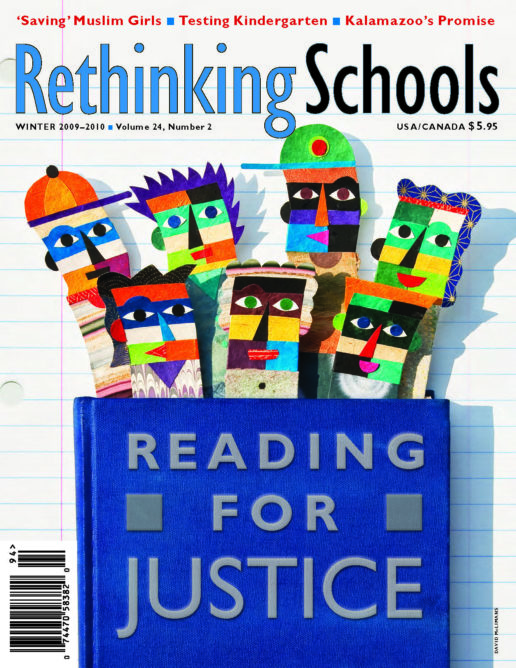Balance of Powers
Illustrator: Randall Enos

The last month of my pregnancy with Graham, we were in and out of the hospital being monitored for a blip in his heartbeat. Most of the time his fetal heart rate was normal, but every now and then it would dip for one beat. We ended up spending two days out of the long Fourth of July weekend in the hospital being monitored, and my husband and I began to theorize that perhaps the doctors didn’t really know what was going on.
I requested an appointment with a doctor I had met only a few times, but we ended up loving him. He knew my chart before entering the exam room, listened to our concerns, and shared research with us, but was also honest about what doctors don’t know about unborn babies, which turns out to be quite a bit. At one point he said, “Obstetrics is really a combination of art and science.” I am sure that some patients would not have found that reassuring, but it was exactly what my husband and I needed to hear. It also sparked my thinking about teaching and how we, too, combine art and science.
Teaching Has Shifted from Art to “Science”
I have taught reading for 12 years, and in that time there has been a significant shift from art to “science.” My first year as a reading specialist, I emailed the district director of reading services to ask what assessments the other Title I teachers used during the year to check for growth and to diagnose student needs. The answer was: nothing. I scrambled to put together a set of running records that I could use. I remember other teachers criticizing me for taking a few days a year of instructional time to assess kids. (The students were reading independently while I assessed.) Most teachers followed intuition, listening to kids read and adjusting lessons accordingly. I also did this daily and found it successful when cross-checked with a periodic formal running record.
Five years later, I felt like the old fart at the August Title I meeting. We were given phonics screeners, running records, various DIBELS screeners, state assessments, and in-program tests to administer throughout the year.
“When do we actually teach?” I asked.
The switch from art to “science” was not only noticeable in the assessment department. Before, we crafted lessons; now, we taught from a program. Before, we adjusted our lessons based on formative assessments; now, we gave frequent tests. Programs were scripted and teachers were evaluated on whether they taught the program “with fidelity.” The underlying premise was that the program was “scientifically based,” and if the kids weren’t learning, then you must be teaching the program incorrectly. In fact, if students weren’t learning, the first response of the administration was, “We need to get in the classroom and see where the program is being taught incorrectly.”
My most miserable time as a teacher was when I attempted to teach a program “with fidelity.” I saw the kids weren’t learning, but continued to plug along, scripted lesson by scripted lesson. Finally, I decided that it was more important to teach with integrity than with fidelity. I didn’t dump the program; I modified it to meet the specific needs of my students. My stress level increased, my prep load increased, and my relationship with my principal and literacy coach suffered. But the kids started learning and I started to feel like a real teacher again.
Teaching from Your Gut, Heart, and Brain
I have since developed the theory that teaching has a balance of powers: gut, heart, and brain. We need our gut, our intuition, to tell us when things are going well and when they are going awry. Our gut is in tune with body language and emotion, and often those can guide us to great insights about a kid: Juan seems most engaged when reading nonfiction; Svetlana loves writing time; Scott doesn’t seem to understand my oral directions. Our heart is our guiding philosophy of learning: I believe in my heart that all kids can learn, but not all kids take the same path. In fact, some kids’ paths may be covered with ivy and brambles and difficult to find. But they still have a path. And, of course, there is our brain: How do I know students are learning? How do I know what they need?
When teaching’s powers are unbalanced, kids suffer. What good is data if we don’t believe that all kids can learn? What good is our intuition if we don’t know how to act upon it?
Perhaps if children were educated by teachers who used their guts, hearts, and brains, they would be inspired to do the same as adults, whether as professionals, parents, or citizens. But maybe that is just my heart getting the better of me.

